During a routine inspection of our hives at the apiary yesterday morning, the Queen was found on the hive floor. She was expired, bereft of life, shuffled off this mortal coil, resting in peace; in short, an ex-Queen.
Now these things happen occasionally; bees – even queens – aren’t immortal after all. It was particularly bad timing, however, in the run-up to Harrow-in-Leaf and the many preparations still to be made for that show. With no sign of any new queen cells it did, however, present an opportunity for a job that’s been on the cards for a while. We had a nuc-box (a half-size colony) of bees in the garden that were waiting for combining with a larger hive. It was queen-right and, though large for the nuc box it was in, too small to over-winter confidently. (Yes, it’s only August, but this is the time to prepare the colonies for winter!)
So on return from the orchard the frames from the nuc were moved into a full-size brood box, and come dusk were carefully taped up and driven to the orchard. There, the two brood boxes were placed on top of each other, with a couple of sheets of newspaper between. Doing this introduces the colonies to each other gently; they become accustomed to the sounds and smells of the other and are less likely to be aggressive once they finally eat through the paper and the colonies unite. We normally move bees at dusk; late enough that virtually all the flying bees have returned to the hive (we don’t want them coming back to the hive location and finding their home has gone) but early enough that there’s still enough light for us to work safely.
Time will tell how successful the combination will be; and also why the queen died in the first place. She’s currently safely in the freezer for later post-mortem examination…

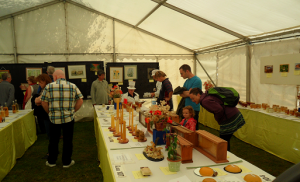
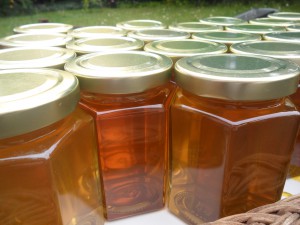
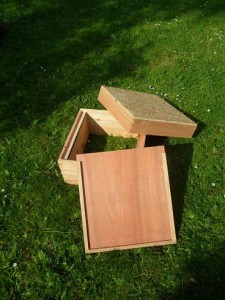
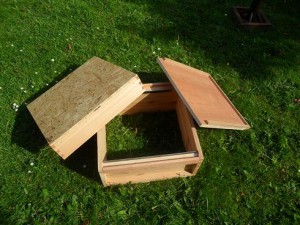
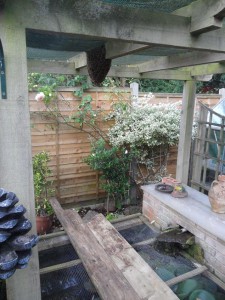
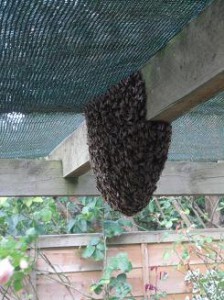
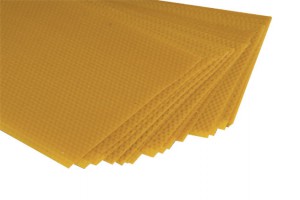 most people “prime” their frames with a sheet of preformed wax that even has slight bumps to help the bees with their geometry. This “foundation” wax comes in standard size sheets and slots into the wooden frames, encouraging the bees to fill the corners of the frames and maximise storage space.
most people “prime” their frames with a sheet of preformed wax that even has slight bumps to help the bees with their geometry. This “foundation” wax comes in standard size sheets and slots into the wooden frames, encouraging the bees to fill the corners of the frames and maximise storage space.